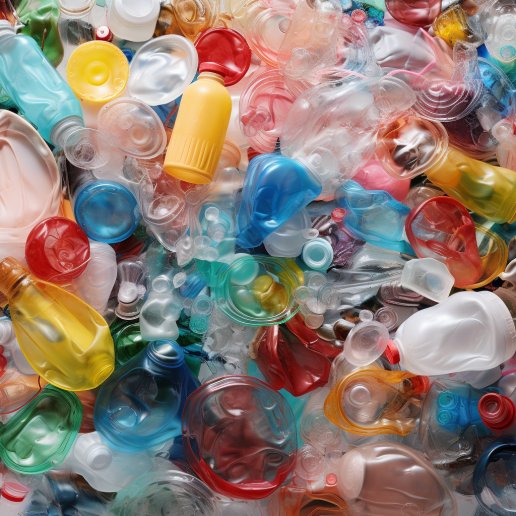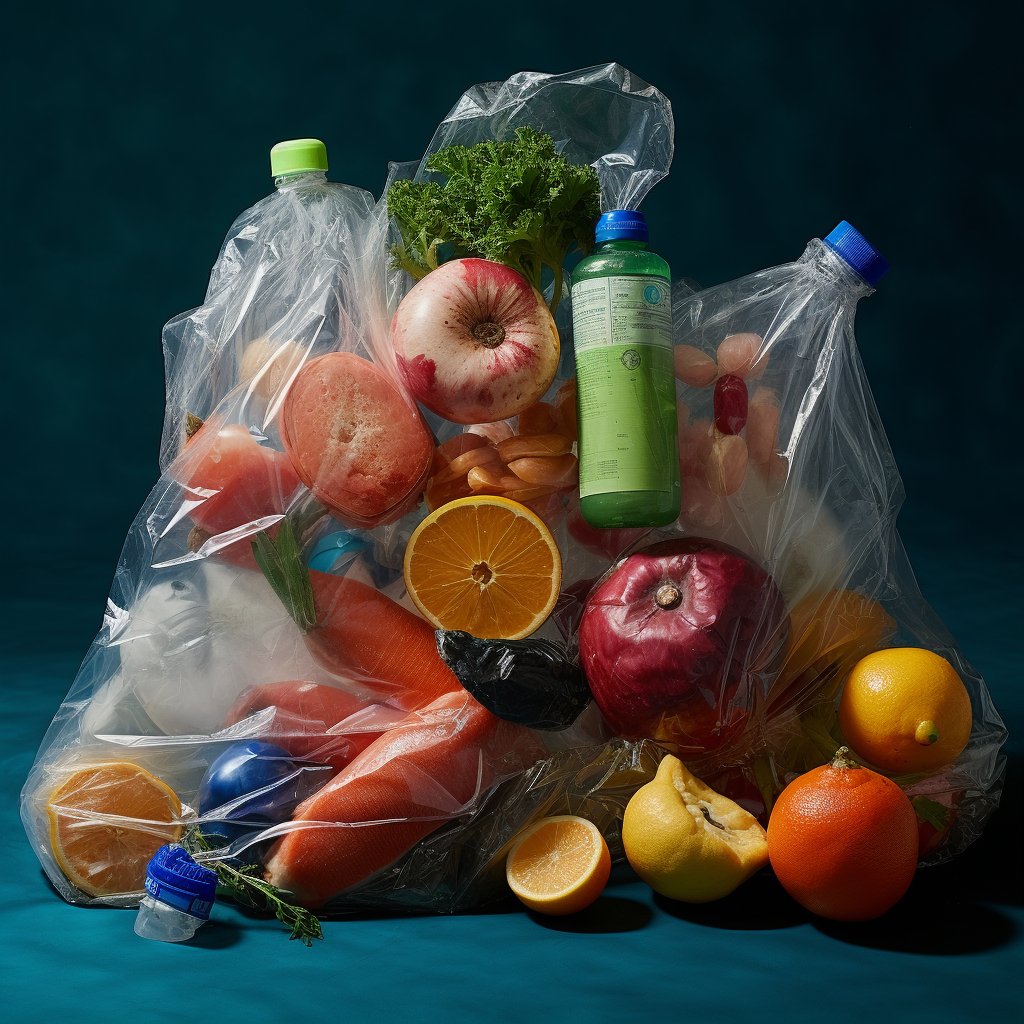Plastics have become an indispensable part of our lives, as they are used in various applications from packaging to electronics, automotive and medical devices. However, plastic waste has become a major environmental issue, as it takes hundreds of years to degrade, and its disposal can lead to waterways, landfills, and ocean pollution. To address this issue, the European Union (EU) has adopted a Strategy for Plastics in a Circular Economy in 2018, which aims to promote a more sustainable use of plastics.
Plastics have become integral to our daily lives, from packaging and consumer products to industrial applications. However, the environmental impact of plastics, particularly single-use plastics, has become a significant concern in recent years. To address this challenge, the European Union has developed a new strategy for plastics in a circular economy, aimed at promoting a more sustainable and circular use of plastics. The strategy includes measures to increase the recycling rate of plastics, promote the use of recycled plastics in new products, and encourage the development of new recycling technologies and infrastructure.

Overview of the EU Strategy for Plastics in a Circular Economy
The EU Strategy for Plastics in a Circular Economy aims to transform the way plastics are produced, used, and recycled in the EU. The strategy has four main objectives, which are:
- Ensure all plastic packaging on the EU market is reusable or recyclable by 2030.
- Reducing the use of single-use plastics, such as straws, cutlery, and cotton buds, and banning those that are not easily recyclable.
- Promoting the use of recycled plastics by setting a target of 10 million tonnes of recycled plastic to be used in new products by 2025.
- Encouraging innovation in the design of plastics, to make them more easily recyclable, and supporting the development of new sustainable materials.
Industrial Usage and Application Areas
The EU Strategy for Plastics in a Circular Economy is expected to significantly impact the plastics industry, as it promotes the use of more sustainable plastics. It encourages the adoption of circular business models. This can be achieved by developing new materials that are more easily recyclable, and using recycled plastics in new products. The strategy also aims to promote the use of biodegradable and compostable plastics, which can help reduce the amount of plastic waste.
The application areas for sustainable plastics range from packaging to electronics, automotive, and medical devices. For example, biodegradable and compostable plastics can be used in food packaging, reducing the amount of plastic waste that ends up in landfills. Recycled plastics can be used in the production of new packaging, reducing the need for virgin plastics. Sustainable plastics can also be used in the production of electronic devices, reducing the environmental impact of e-waste.
Consumer Product Examples and Material Properties
The EU Strategy for Plastics in a Circular Economy will significantly impact consumer products, as it promotes the use of more sustainable plastics in a range of applications. For example, sustainable plastics can be used in the production of food packaging, reducing the amount of plastic waste that ends up in landfills. Recycled plastics can be used to produce new consumer products, such as clothing and accessories, reducing the need for virgin plastics.
The material properties of sustainable plastics are diverse, and depend on the type of plastic and the application. Biodegradable and compostable plastics can have similar properties to traditional plastics, such as durability and flexibility, while also being able to biodegrade under certain conditions. Recycled plastics can have different properties depending on the source material, but can often be used in similar applications as virgin plastics.
Future Trends in Recycling
The EU Strategy for Plastics in a Circular Economy is expected to drive significant innovation in the recycling industry, as it promotes the use of recycled plastics in new products. It encourages the adoption of circular business models. This is likely to lead to the development of new recycling technologies, such as chemical recycling, which can convert plastics into their basic building blocks, allowing them to be used to produce new plastics.
Market Price Developments
The EU Strategy for Plastics in a Circular Economy is expected to impact the market price of plastics, as it promotes the use of sustainable and recycled plastics. The demand for recycled plastics is likely to increase, which could lead to higher prices. However, this could also lead to increased investment in recycling infrastructure and technology, which could help to bring down the cost of recycled plastics in the long term.
Global Impact
The EU Strategy for Plastics in a Circular Economy is also likely to have a global impact, as the EU is a major producer and consumer of plastics. Adopting more sustainable and circular business models in the EU could encourage other countries and regions to follow suit, leading to a global shift towards more sustainable use of plastics. This could also create opportunities for EU-based companies to export their expertise and technologies to other parts of the world.
Environmental Impact
The EU Strategy for Plastics in a Circular Economy aims to reduce the environmental impact of plastics, a major concern worldwide. Plastics are a major contributor to marine pollution and contribute to greenhouse gas emissions during their production and disposal. By promoting the use of sustainable and recycled plastics, the EU Strategy for Plastics in a Circular Economy could help reduce plastics’ environmental impact.
The strategy also includes measures to reduce littering and promote better waste management, which could help to prevent plastics from entering the environment. This could lead to cleaner oceans and a reduction in the negative impact of plastics on wildlife.
Economical Impact
The EU Strategy for Plastics in a Circular Economy could also significantly impact the economy, both in the EU and around the world. By promoting the use of sustainable and recycled plastics, the strategy could create new opportunities for businesses involved in recycling, the production of sustainable plastics, and developing new materials and technologies.
The shift towards circular business models could also lead to the creation of new jobs in the EU, as more companies adopt sustainable practices and invest in new technologies. This could drive economic growth in the region and create new opportunities for EU-based companies.
However, there may also be short-term economic challenges associated with adopting the EU Strategy for Plastics in a Circular Economy. The cost of recycling infrastructure and technology may be higher than the cost of traditional waste management practices, which could create short-term economic challenges for some businesses. However, the long-term benefits of sustainable and circular business models outweigh these short-term costs.
Overall, the EU Strategy for Plastics in a Circular Economy is likely to positively impact both the environment and the economy by promoting the use of sustainable and circular business models in the plastics industry.
Recycling is a key component of the EU Strategy for Plastics in a Circular Economy, as it promotes the use of recycled plastics in new products and aims to increase the recycling rate of plastics in the EU.
One important aspect of the strategy is establishing a common EU-wide target for the recycling plastic packaging waste. The target is set at 50% by 2025 and 55% by 2030, with an intermediate target of 65% for plastic packaging recycling by 2025. This target is expected to drive investment in recycling infrastructure and technology, and to create new opportunities for businesses involved in recycling.
The EU Strategy for Plastics in a Circular Economy also includes measures to improve the quality of recycled plastics, by promoting better sorting and separation of plastic waste and by encouraging the development of new recycling technologies. This could increase the demand for recycled plastics and reduce the amount of plastic waste that ends up in landfills or the environment.
Another important aspect of the strategy is the promotion of extended producer responsibility (EPR) schemes for plastics. EPR requires producers to take responsibility for the end-of-life management of their products, including the collection and recycling of waste. By promoting EPR for plastics, the strategy aims to create a more sustainable and circular business model for the plastics industry, where producers take responsibility for the environmental impact of their products.
Overall, the EU Strategy for Plastics in a Circular Economy represents a significant shift towards a more sustainable and circular use of plastics, with recycling playing a key role in achieving this goal. The strategy includes measures to increase the recycling rate of plastics, improve the quality of recycled plastics, and promote extended producer responsibility for plastics. These measures are expected to create new opportunities for businesses involved in recycling, and to reduce the environmental impact of plastics in the EU and around the world.
Recycling strategy
The EU Strategy for Plastics in a Circular Economy represents a major shift in how plastics are produced and consumed, focusing on circular business models that promote sustainability and reduce the environmental impact of plastics. Here are some of the key aspects of the strategy in relation to process, advantages, disadvantages, and environmental and global impact:
Process
The EU Strategy for Plastics in a Circular Economy includes a range of measures to promote sustainable and circular business models in the plastics industry. These measures include:
- Setting a common EU-wide target for the recycling of plastic packaging waste.
- Promoting the use of recycled plastics in new products.
- Encouraging the development of new recycling technologies and infrastructure.
- Promoting extended producer responsibility (EPR) for plastics.
- Reducing the use of single-use plastics and promoting sustainable alternatives.
Advantages
The EU Strategy for Plastics in a Circular Economy has a number of advantages, including:
- Reduced environmental impact: By promoting the use of sustainable and recycled plastics, the strategy could help to reduce the environmental impact of plastics, including marine pollution and greenhouse gas emissions.
- Increased resource efficiency: Circular business models can increase resource efficiency and reduce waste, leading to cost savings for businesses and a more sustainable use of resources.
- New business opportunities: The shift towards circular business models could create new opportunities for businesses involved in recycling, sustainable plastics production, and new material and technology development.
- Improved product quality: The use of recycled plastics can improve product quality, as recycled plastics can have better mechanical and thermal properties than virgin plastics.
Disadvantages
While the EU Strategy for Plastics in a Circular Economy has many advantages, there are also some potential disadvantages, including:
- Short-term costs: The adoption of circular business models may require significant investment in recycling infrastructure and technology, which could create short-term costs for some businesses.
- Market challenges: The market for recycled plastics still needs to growl, and there may be challenges in developing new markets for recycled plastics.
- Complexity: Implementing circular business models can be complex, requiring changes to supply chains, business practices, and consumer behaviour.
EU Strategy for Plastics
The EU Strategy for Plastics in a Circular Economy could significantly impact the environment and the global economy. By reducing the environmental impact of plastics and promoting sustainable business models, the strategy could help to address some of the major environmental challenges facing the world today. At the same time, the shift towards circular business models could create new economic opportunities and help to drive sustainable economic growth. However, there may be short-term economic challenges associated with adopting the strategy, and there may be challenges in developing new markets for recycled plastics. Overall, the EU Strategy for Plastics in a Circular Economy represents a major step towards a more sustainable and circular use of plastics, potentially creating significant environmental and economic benefits.






